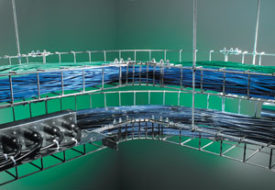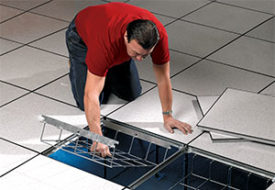There’s a storm of data coming courtesy of high definition streaming services, next-generation apps and the explosion in the sheer number of connected users and devices. Data-reliant enterprises and internet service providers realize this volume can no longer be effectively managed by a centralized cloud model. They are moving to the Edge; breaking up their primary cloud and raining down micro data centers around the globe to reduce latency. Placing data, applications and content closer to employees and consumers yields better performance for an improved end-user experience, while building in failover and network resiliency. That’s the Edge, and many companies are in a rush to get there.
So much so that micro data centers are popping up by the thousands. And when a business decides it needs to drop another data center into a new market or expand capacity in an existing one, it wants to do so quickly and at minimal cost, hence rapid deployment.
 This has given rise to the concept of the micro data center; modular data processing assets of identical design that can be deployed as needed. Some take the shape of a preconfigured box on wheels (top), others may be a small row of cabinets in a leased or co-located space (middle), while others are self-contained mobile facilities on a flatbed truck or fashioned after shipping containers for portable use (bottom). Every enterprise will have its own preferences and logic for optimizing micro data center design to its objectives, but all will have one thing in common: repeatability. Engineers will spec out all the components needed to execute desired functionality and then implement a cookie-cutter design with everything that must be procured for rapid deployment. This allows for more accurate budgeting and forecasting of materials while expediting project completion, as IT installers are working with familiar blueprints including those for cable management.
This has given rise to the concept of the micro data center; modular data processing assets of identical design that can be deployed as needed. Some take the shape of a preconfigured box on wheels (top), others may be a small row of cabinets in a leased or co-located space (middle), while others are self-contained mobile facilities on a flatbed truck or fashioned after shipping containers for portable use (bottom). Every enterprise will have its own preferences and logic for optimizing micro data center design to its objectives, but all will have one thing in common: repeatability. Engineers will spec out all the components needed to execute desired functionality and then implement a cookie-cutter design with everything that must be procured for rapid deployment. This allows for more accurate budgeting and forecasting of materials while expediting project completion, as IT installers are working with familiar blueprints including those for cable management.
 Micro data centers are typically connected to the central cloud by fiber optic lines to source apps, content and cache data, and then onto wireless access points to broadcast its services to local users. But within the micro data center lie the same cabling issues found in the central cloud, albeit on a smaller scale. At some point all the switches, routers, servers and memory arrays must be connected to each other, and from rack to rack. There are also power and climate control lines to run. Just as with hardware compute assets, engineers can design repeatable cable conveyance plans to speed installation and manage costs. That’s where Snake Tray comes in.
Micro data centers are typically connected to the central cloud by fiber optic lines to source apps, content and cache data, and then onto wireless access points to broadcast its services to local users. But within the micro data center lie the same cabling issues found in the central cloud, albeit on a smaller scale. At some point all the switches, routers, servers and memory arrays must be connected to each other, and from rack to rack. There are also power and climate control lines to run. Just as with hardware compute assets, engineers can design repeatable cable conveyance plans to speed installation and manage costs. That’s where Snake Tray comes in.
The Mega Snake 801 Series and Snake Canyon are two Snake Tray cable conveyance systems that are perfect matches for the rapid deployment of micro data centers. Mega Snake is designed to be suspended from the ceiling, attached to racks and or cabinets or mounted to walls; Snake Canyon is an under floor cable tray for rooms with raised flooring. Both offer fast, flexible installation using prefabricated segments that snap together with Lego™-like ease to eliminate field fabrication and the need for special parts. Whether overhead or underfloor, Snake Tray’s cable management systems are infinitely expandable, reusable and handle data and power lines in one solution. The trays even ship to the job site in a nested style for easy transportation and deployment as fast as the micro data center itself. Best of all, engineers can architect a cable management system once for all micro data centers of the same design. Snake Tray delivers the repeatability and predictability needed to stay on budget while keeping pace with your rapidly expanding network environment.
Snake Tray has the experience and resources to support any size installation from a micro data center to facilities occupying millions of square feet. Let us help you make your next deployment go smoother and get to the Edge faster with effective cable management solutions.

